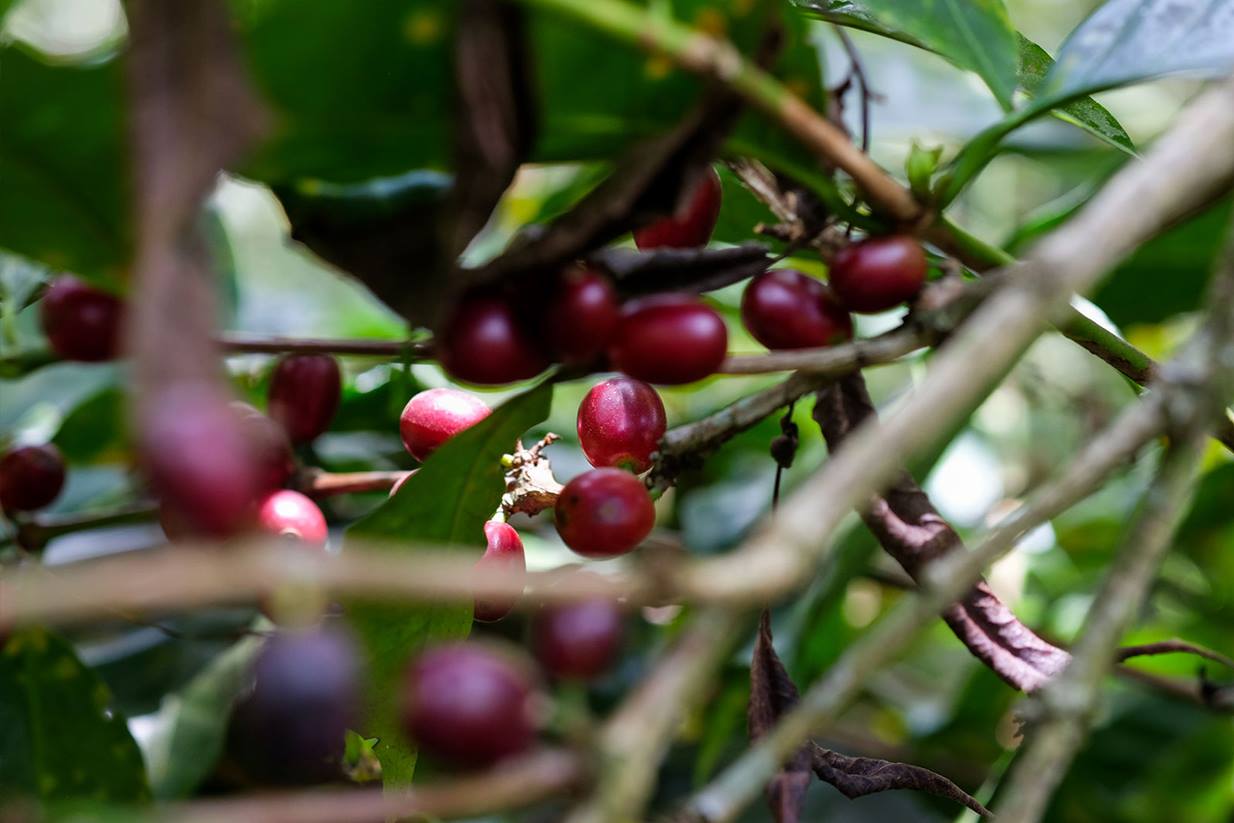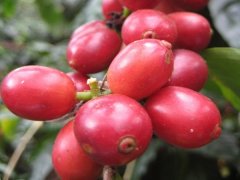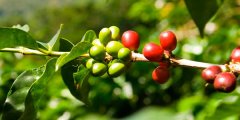Which country is Arabica? The birthplace of Arabica coffee-Ethiopia Ethiopia!

Professional coffee knowledge exchange more coffee bean information please follow the coffee workshop (Wechat official account cafe_style)
Arabica
If you want to know coffee and its cultural story, you have to know Ethiopia, the hometown of Arabica coffee beans of individual coffee. Besides bringing you carefully selected Ethiopian-Yegashifi G1 coffee beans and earbags, Diguo Coffee is also here to organize some introduction materials to show you about this remote and historic coffee hometown.
This article will introduce:
National Geographic and Coffee planting History
Introduction to the characteristics of various producing areas and coffee beans
National Geographic and Coffee planting History
Ethiopia, a landlocked country located in the Horn of Africa, is the most populous landlocked country in the world. Ethiopia is regarded as the birthplace of coffee-Arabica species (Arabica). It has rich native varieties and a wide range of genetic sequences, many of which can not be found in other countries. Coffee in Ethiopia is mostly grown by small farmers on their own small farms or in wild and semi-wild environments, and nearly 15 million people across the country are involved in growing and processing coffee beans. As the birthplace of Arabica coffee varieties, coffee consumption dates back to the 10th century, when the first African nomads to eat coffee fruits (coffee cherries / coffee cherries) mixed coffee beans, oil and spices into refreshing and refreshing foods. Coffee farmers in Ethiopia mostly grow and harvest coffee by hand, in conjunction with the Coffee and Tea Development Department set up by the local government to improve and manage all coffee beans.
Introduction to the characteristics of various producing areas and coffee beans
Yega Xuefei Yirga-Cheffe
Yirga is a high-altitude town in Ethiopia-Sidamo province. The word "Yega" has the meaning of "let it settle", while "cheffe" means "marsh". Because of the local environment and climate, the coffee grown is famous for its special lemon and citrus flavor, which is different from that of other parts of Ethiopia, so it is an independent producing area. Yega Xuefei coffee trees are widely grown in high 1900m--2200m alpine areas, while non-cultivated coffee trees grow in the woods. Although they are in the tropics, the climate is cool, rainy but not humid, and the air is fresh and clean, so they are full of natural flavor.
Yega Xuefei stands out for its unique flavor in Ethiopia, which has many native species. It is the best coffee in Ethiopia, with sweet and sour fruits, citrus citric acid and jasmine flowers, and soft sweet orange peel, raisins and cinnamon. The shallow Yega Xuefei tastes fresh and bright with the aromas of fruit tea and alpine tea. Washed Yega Chuefei has a bright and pure flavor and acidity, which highlights its unique characteristics, while Sun Yega Chuefei has a wild wine flavor and gentle aroma, and its flavor is even more unique.
Sidamo Sidamo
Growing in the southernmost Ethiopian plateau between 1400-2200m above sea level, southeast of Jima, just south of the capital, usually sweet, but also liked by most people, raw bean green with gray. The coffee in Sidamo has a variety of flavors. Different soil types, microclimates and countless native coffee species, towering mountains, highlands, plateaus, valleys and plains, diverse topography, and the geology of the area belongs to nutrient-rich, well-drained volcanic soil. the depth of the soil is nearly two meters, and the surface soil is dark brown or brown. The biggest advantage of the area is that the soil fertility is maintained through the circulation of organic matter, using the withered leaves of the surrounding trees or the residual roots of the plants as fertilizer. Therefore, the coffee produced in cities and towns has obvious differences and characteristics. The Sidamo taste in the sun is close to the smell of flowers, but it is about a little earthy. Water washing has a nutty fruit aroma with a slight cocoa aroma, but what the two works have in common is smooth taste and viscosity, comfortable and pleasant acidity and fragrance. Medium roasting is suitable for individual products, while deep roasting is suitable for blending coffee and good Espresso base.
Characteristics of Arabica coffee beans-Why only Arabica is often used to make boutique coffee?
Important Notice :
前街咖啡 FrontStreet Coffee has moved to new addredd:
FrontStreet Coffee Address: 315,Donghua East Road,GuangZhou
Tel:020 38364473
- Prev

What is the difference between Starbucks coffee beans and KFC Arabica coffee beans?
Professional Coffee knowledge Exchange more information about coffee beans Please follow the coffee workshop (Wechat official account cafe_style) Arabica in the 16th century there was a shepherd in Ethiopia who one day found his sheep suddenly bouncing there, which was amazing. After careful observation, we realized that it was because the sheep had eaten a kind of red fruit. In the pasture
- Next

Introduction to the characteristics of Arabica coffee beans how much is different kinds of Arabica coffee per pound
Professional coffee knowledge exchange more coffee bean information please follow coffee workshop (Wechat official account cafe_style) Arabica coffee originated in Ethiopia, the great navigation era was brought to the world by the colonists, has gradually become the most popular drink in the world. With Skyscanner, let's take a look at the main producing areas of coffee beans and the types of individual coffee. Coffee brings the whole world
Related
- Detailed explanation of Jadeite planting Land in Panamanian Jadeite Manor introduction to the grading system of Jadeite competitive bidding, Red bid, Green bid and Rose Summer
- Story of Coffee planting in Brenka region of Costa Rica Stonehenge Manor anaerobic heavy honey treatment of flavor mouth
- What's on the barrel of Blue Mountain Coffee beans?
- Can American coffee also pull flowers? How to use hot American style to pull out a good-looking pattern?
- Can you make a cold extract with coffee beans? What is the right proportion for cold-extracted coffee formula?
- Indonesian PWN Gold Mandrine Coffee Origin Features Flavor How to Chong? Mandolin coffee is American.
- A brief introduction to the flavor characteristics of Brazilian yellow bourbon coffee beans
- What is the effect of different water quality on the flavor of cold-extracted coffee? What kind of water is best for brewing coffee?
- Why do you think of Rose Summer whenever you mention Panamanian coffee?
- Introduction to the characteristics of authentic blue mountain coffee bean producing areas? What is the CIB Coffee Authority in Jamaica?

